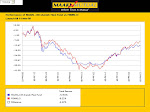
Invest the Ringgit and spend the sen. Happy reading.
1. Gather every financial statement you can.
This includes bank statements, investment accounts, recent utility bills and any information regarding a source of income or expense. The key for this process is to create a monthly average so the more information you can dig up the better.
2. Record all of your sources of income.
If you are self-employed or have any outside sources of income be sure to record these as well. If your income is in the form of a regular paycheck where taxes are automatically deducted then using the net income, or take home pay, amount is fine. Record this total income as a monthly amount.
3. Create a list of monthly expenses.
Write down a list of all the expected expenses you plan on incurring over the course of a month. This includes a mortgage payment, car payments, auto insurance, groceries, utilities, entertainment, dry cleaning, auto insurance, retirement or college savings and essentially everything you spend money on.
4. Break expenses into two categories: fixed and variable.
Fixed expenses are those that stay relatively the same each month and are required parts of your way of living. They included expenses such as your mortgage or rent, car payments, cable and/or internet service, trash pickup, credit card payments and so on. These expenses for the most part are essential yet not likely to change in the budget.
Variable expenses are the type that will change from month to month and include items such as groceries, gasoline, entertainment, eating out and gifts to name a few. This category will be important when making adjustments.
5. Total your monthly income and monthly expenses.
If your end result shows more income than expenses you are off to a good start. This means you can prioritize this excess to areas of your budget such as retirement savings or paying more on credit cards to eliminate that debt faster. If you are showing a higher expense column than income it means some changes will have to be made.
6. Make adjustments to expenses.
If you have accurately identified and listed all of your expenses the ultimate goal would be to have your income and expense columns to be equal. This means all of your income is accounted for and budgeted for a specific expense.
.
If you are in a situation where expenses are higher than income you should look at your variable expenses to find areas to cut. Since these expenses are typically essential it should be easy to shave a few dollars in a few areas to bring you closer to your income.
7. Review your budget monthly.
It is important to review your budget on a regular basis to make sure you are staying on track. After the first month take a minute to sit down and compare the actual expenses versus what you had created in the budget. This will show you where you did well and where you may need to improve.













